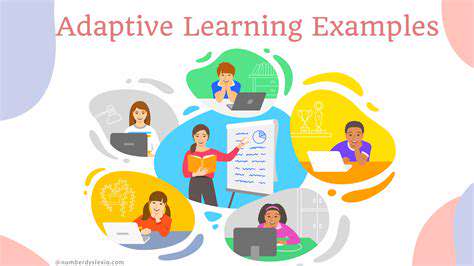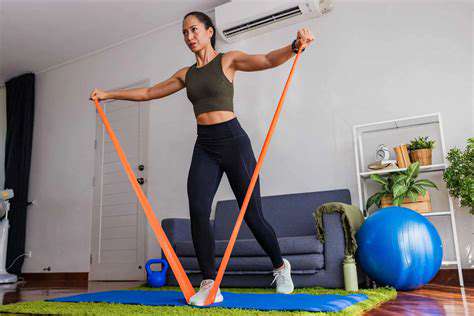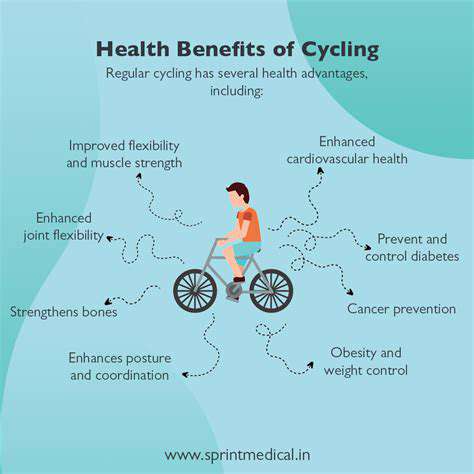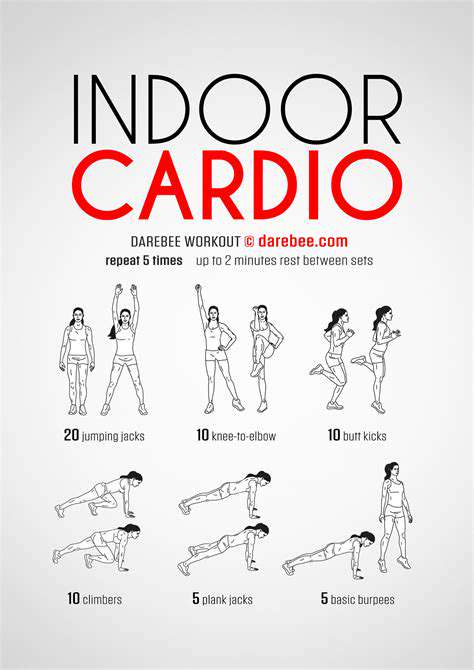Staying Independent: Exercise Tips for Seniors with Walkers
Incorporating Walking into Your Routine
Walking for Improved Cardiovascular Health
Regular walking provides exceptional cardiovascular benefits, crucial for maintaining independence with age. This low-impact activity strengthens cardiac muscles, enhances circulation, and helps regulate blood pressure - reducing risks for heart disease and stroke that can compromise autonomy. Consistent walking also boosts energy levels and overall wellbeing, making daily tasks more manageable.
The advantages extend beyond cardiovascular improvements. Walking increases lung capacity, facilitating easier breathing during various activities. As fitness improves, routine activities like stair climbing or carrying packages become less taxing, directly supporting independent living.
Building Strength and Maintaining Mobility
While primarily cardiovascular, walking also effectively builds lower-body strength. The continuous muscle engagement and impact from each step strengthen both muscles and bones - critical for preserving mobility and preventing falls (a major cause of senior injuries). Regular walking also keeps joints supple and flexible, reducing stiffness and improving movement ease.
Enhanced muscular and skeletal strength from walking translates to greater capacity for independent daily activities. Whether handling groceries, navigating stairs, or simply moving around your home, stronger muscles and bones support self-sufficiency.
Managing Weight and Reducing Risk of Chronic Conditions
Weight management remains vital for overall health and independence. Walking burns calories effectively, helping maintain healthy weight while reducing risks for type 2 diabetes and obesity - conditions that can severely impact independent functioning. Regular walking helps regulate blood sugar levels, particularly beneficial for those with prediabetes or diabetes.
Enhancing Mental Well-being and Cognitive Function
Beyond physical benefits, walking significantly impacts mental health. The rhythmic motion and outdoor exposure help alleviate stress and anxiety, promoting positivity and calmness. Regular physical activity like walking also correlates with improved cognitive performance, potentially enhancing memory and focus - crucial for managing daily responsibilities independently.
Increased cerebral blood flow from walking contributes to clearer thinking and mental sharpness. This cognitive vitality supports independent living by facilitating financial management, household maintenance, and social engagement.
Integrating Walking into Your Daily Schedule
Incorporating walking into daily life proves surprisingly manageable. Begin with short 10-minute walks during breaks or after meals, gradually increasing duration and intensity as fitness improves. Pedometers or fitness trackers help monitor progress and set realistic goals. Walking with companions or joining groups adds motivation and enjoyment.
Look for natural walking opportunities: choose stairs over elevators, park farther from destinations, or walk to nearby stores. These small changes cumulatively benefit health and independence.
Adapting Activities to Maximize Independence

Adapting Activities for Diverse Learners
Catering to various learning styles remains essential for effective instruction. Recognizing individual differences creates supportive, enriching learning environments. This includes accommodating visual, auditory, and kinesthetic learners through tailored activities. Differentiated instruction allows all participants to engage with material according to their strengths and preferences.
Utilizing Technology for Enhanced Engagement
Technology integration significantly boosts engagement and comprehension. Interactive simulations, digital resources, and educational games make learning dynamic and exciting. Technology creates immersive, interactive environments accommodating diverse learners. It also enables personalized learning experiences with customized content and pacing.
Promoting Active Learning Strategies
Active learning approaches are vital for engagement and retention. Participatory activities like group discussions, debates, and hands-on experiments foster deeper understanding and critical thinking. These methods stimulate curiosity and encourage active information processing. They also develop collaboration and communication skills.
Creating Inclusive Learning Environments
Inclusive environments maximize participant success. This requires fostering belonging and respect for all learners regardless of background or ability. Implementing equitable strategies ensures everyone feels valued and supported, including addressing biases and creating full participation opportunities.
Differentiating Instruction Based on Needs
Differentiated instruction adapts teaching to diverse needs, recognizing varying learning paces and capabilities. Tailoring instruction helps all participants reach their potential. Providing multiple learning pathways through visual aids, hands-on activities, or technology tools accommodates different styles.
Encouraging Collaboration and Teamwork
Collaborative activities develop social skills, communication, and problem-solving abilities. Group projects, peer learning, and cooperative exercises build community and shared responsibility. Collaboration enables mutual learning, idea sharing, and deeper concept understanding. These experiences also cultivate interpersonal skills for future success.
Assessing Learning Progress and Adjusting Strategies
Regular progress assessment informs teaching adjustments. Monitoring understanding and identifying challenges allows method modifications. Tracking performance enables better adaptation to individual and group needs. This continuous assessment cycle ensures relevant, effective instruction.











